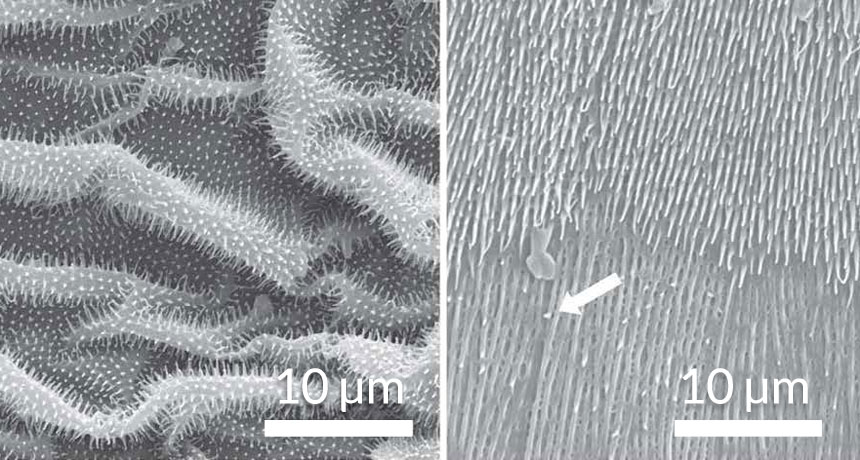Legless geckos slither using skin ridges
Belly has flat rows of ripples that may help the lizards wriggle

SKIN RIDGES Spiky spines (left) cover the back of the flap-footed lizard Lialis jicari. These spines are also underneath scales on a part of the gecko’s belly (right, top half) that doesn’t touch the ground. Skin that does slide against the ground has flattened ridges (right, bottom), which could help the reptiles slither. Tiny remnants of spines run along the ridges (arrows).
M. Spinner et al/ Proceedings of the Royal Society B 2013